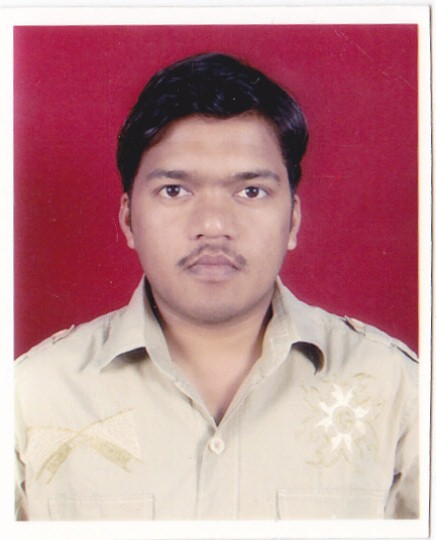International Business Q. What is ‘Bill of
Lading’? State its features.
Ans. When goods are sent by
ship, shipping company issues a document named as bill of lading. Bill of
lading may be defined as a receipt given by the shipping company to the
exporter for carrying the goods to the importer. When goods reach the
destination, the importer gets them from the shipping company in return of bill
of lading.
Bill
of lading contains the following information:
1) Name of exporter;
2) Name of importer;
3) Name of notifying party;
4) Identification marks on packages;
5) Description of goods including number of packages, goodsweight
and volume, condition of goods at the time of loading;
6) Freight charges;
7) Name of the ship;
8) Port of shipment;
9) Port of destination;
10) Date of shipment.
Features
of bill of lading are:
a) Receipt of goods: Bill of lading implies that goods have been
received by the shipping company.
b) Document to title of goods: Bill of lading serves as a document
of title to the goods. A bonafide holder of bill of lading has the title to the
goods.
c) Contract of affreightment: Bill of lading is an evidence of the
contract between the shipper and the shipping company to carry the goods in
consideration of freight.
Q. Your firm is planning
to import textile machinery from Japan. Describe the procedure involved in
importing.
Ans. Following procedure
would be followed for importing textile machinery from Japan:
1.
IEC number, RCMC and import
license: First step would be to obtain Import Export Code (IEC) number from
Directorate General Foreign Trade Authority and Registration cum Membership
Certificate (RCMC). I will also apply for import license.
2.
Trade Enquiry:
I will seek trade enquiry from various suppliers about the price and terms and
conditions. Based on the quotations from suppliers, I will identify from whom I
should import the goods.
3.
Foreign Exchange: I
will apply to a bank authorized by Reserve Bank of India to issue foreign
exchange.
4.
Placing the Order:
After receiving the sanction of RBI for release of foreign exchange, I will
place the order called ‘indent’ for the required goods.
5.
Sending Letter of Credit:
Usually, the exporter asks the importer to send a letter of credit, to be sure
about the creditworthiness of the importer. I will obtain a letter of credit
from his banker.
6.
Receiving Shipping Documents:
Now I will approach the custom authorities to make payment of custom duties. On
payment of custom duties, I will receive the delivery order or release order.
7.
Taking Delivery of Goods: Having
completed all the formalities, I or my clearing agent will take the delivery of
goods from the dock.
Q. Mention the steps that
need to be followed in export trade.
Ans. The steps that need to
be followed in export trade are:
a.
Receipt of enquiry and sending quotation
b.
Obtaining an order or indent
c.
Getting letter of credit
d.
Obtaining export license
e.
Settlement of rate of exchange
f.
Production or procurement of goods
g.
Packing and marking
h.
Insurance of goods
i.
Arrangement for shipping the goods
j.
Customs formalities
k.
Mate’s receipt
l.
Preparation of commercial invoice
m. Sending
documents to the importer.
n.
Receiving payment from the importer.
Q. Why was WTO set up?
Briefly explain its objectives and functions.
Ans. World Trade
Organisation was set up on January 1, 1995 replacing GATT with the sole
objective of solving trade problems between countries and providing a forum for
multilateral trade negotiations.
Following
are its objectives:
a) Raising standard of living;
b) Employment generation;
c) Optimal use of world resources;
d) Sustainable development
e) Ensuring that LDC (Least Developed Countries) secures a better
share of growth in international trade.
The
main functions of WTO are:
a.
WTO provides a forum for further negotiations for trade
liberalization in the framework of the various agreements concluded.
b.
The countries might prevent imports even after they have
negotiated their free entry. They may set arbitrary health or safety standards
that favour their home country production. In such cases, WTO administers the
dispute settlement procedure.
c.
WTO establishes and directs a trade policy review mechanism so as
to examine the trade policies and practices of the member countries and to
suggest measures of reform.
d.
WTO undertakes research and publishes information and studies for
the international community.
e.
WTO cooperates on equal footing
with the World Bank and the International Monetary Fund for the purpose of
economic policy making.
Q. What was the need to
establish IMF? State its main functions.
Ans. IMF was established on
December 27, 1945, to institute an open and stable monetary system in the
world. Its headquarters are in Washington DC. IMF is an autonomous body and had
191 member countries in 2005. The major idea underlying the setting up of the
IMF is to evolve an orderly international monetary system, i.e. facilitating
system of international payments and adjustments in exchange rates among
national currencies.
Its
main functions are:
a.
IMF acts as a short-term credit institution for the benefit of
member countries.
b.
It keeps reserves of the currencies of all member countries.
c.
It lends to the borrowing countries the currencies which they
require.
d.
It provides mechanism for the orderly adjustment of exchange
rates, i.e. the rates at which different currencies could be purchased and
sold.
e.
It provides machinery for international consultations.
It promotes the expansion of international trade
for the mutual benefits of member countries.
| 